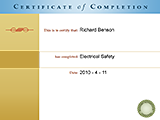Microsoft Access 2010 - Structuring Existing Data
- Product ID
- soniased_vod
- Training Time ?
- 57 to 62 minutes
- Language(s)
- English
- Video Format
- High Definition
- Required Plugins
- None
- Number of Lessons
- 6
- Quiz Questions
- 5
- Question Feedback
- Wrong Answer Remediation
- Lesson Bookmarking
- Downloadable Resources



Microsoft Access 2010: Structuring Existing Data
Trying to restructure data and tables in Microsoft Access 2010 can be difficult. This training video emphasizes the importance of structuring data correctly through three forms of what is called the ’Normalization’ concept, and explains what Normalization means.
The section on the First Normal Form explains how to uniquely identify records within tables. The course shows how to import data into a table, and teaches important things to keep in mind when creating a database, such as not having identical rows. The section on the Second Normal Form explains how everything in the Second Form must be in the First Form, and every field must be related to the primary key. Continuing on to the Third Normal Form, viewers learn that whatever is in the Third Form must be in the Second Form, and there should be nothing in any of the fields derived from someplace else. All three sections illustrate how to navigate Microsoft Access 2010. This course also teaches how to create a Junction Table, as well as how to improve the table structure.
Watch this training video to improve your understanding of Microsoft Access 2010 and learn how to create well-structured databases.
![]() This course is in the Video On Demand format, to read about Video On Demand features click here.
This course is in the Video On Demand format, to read about Video On Demand features click here.

- Install on any SCORM LMS
- Full-screen video presentation
- Print certificate and wallet card
- You have 30 days to complete the course
Everyone who uses Microsoft Access 2010
- Structuring Existing Data
- First Normal Form
- Second Normal Form
- Third Normal Form
- Creating a Junction Table
- Improving the Table Structure
© Mastery Technologies, Inc.




